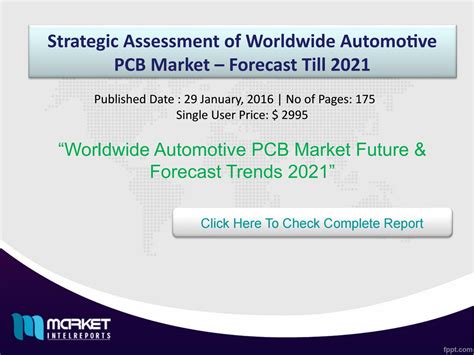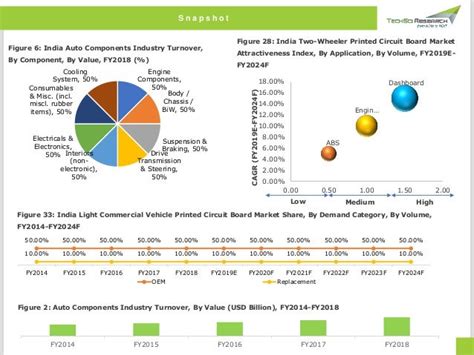Introduction to the automotive PCB market
The automotive industry has undergone a significant transformation in recent years, with the increasing adoption of advanced electronics and communication systems in vehicles. This shift has led to a surge in demand for automotive printed circuit boards (PCBs), which serve as the backbone of these sophisticated systems. The automotive PCB market has emerged as a crucial segment within the overall PCB industry, experiencing remarkable growth and presenting new opportunities for PCB designers and manufacturers.
In this comprehensive article, we will delve into the dynamics of the automotive PCB market, exploring its current state, key drivers, challenges, and future prospects. We will also examine the role of PCB designers in shaping the industry and the strategies they employ to capitalize on the growing demand for automotive PCBs.
Market Overview and Size
The global automotive PCB market has witnessed substantial growth in recent years, driven by the increasing electronics content in vehicles and the rising demand for advanced driver assistance systems (ADAS), infotainment systems, and electric vehicles (EVs). According to market research reports, the automotive PCB market size was valued at USD 7.5 billion in 2020 and is projected to reach USD 14.2 billion by 2028, growing at a compound annual growth rate (CAGR) of 8.3% during the forecast period.
| Year | Market Size (USD Billion) |
|---|---|
| 2020 | 7.5 |
| 2021 | 8.1 |
| 2022 | 8.8 |
| 2023 | 9.5 |
| 2024 | 10.3 |
| 2025 | 11.2 |
| 2026 | 12.1 |
| 2027 | 13.1 |
| 2028 | 14.2 |
The growth of the automotive PCB market can be attributed to several factors, including:
- Increasing demand for advanced safety features and ADAS
- Growing adoption of in-vehicle infotainment systems
- Rising popularity of electric and hybrid vehicles
- Stringent government regulations on vehicle safety and emissions
- Technological advancements in automotive electronics

Key Market Segments
The automotive PCB market can be segmented based on various criteria, such as application, vehicle type, PCB type, and geography.
Application
- ADAS and Safety Systems
- Infotainment Systems
- Powertrain Systems
- Body and Comfort Electronics
Vehicle Type
- Passenger Vehicles
- Commercial Vehicles
- Electric Vehicles
PCB Type
- Single-sided PCBs
- Double-sided PCBs
- Multi-layer PCBs
- Flexible PCBs
Geography
- North America
- Europe
- Asia-Pacific
- Latin America
- Middle East and Africa

Market Drivers and Challenges
Drivers
- Increasing Electronics Content in Vehicles
- Advanced safety features and ADAS
- In-vehicle infotainment systems
-
Vehicle connectivity and telematics
-
Growing Demand for Electric Vehicles
- Government initiatives and subsidies
- Stringent emissions regulations
-
Declining battery costs
-
Technological Advancements
- Miniaturization of electronic components
- High-speed data transmission
- Wireless communication protocols
Challenges
- Complexity of Automotive PCB Design
- Harsh operating conditions (temperature, vibration, moisture)
- Electromagnetic interference (EMI) and electromagnetic compatibility (EMC)
-
Space constraints and weight reduction
-
Supply Chain Disruptions
- Raw material shortages
- Geopolitical uncertainties
-
COVID-19 pandemic impact
-
Cost Pressure and Competition
- Increasing price sensitivity among automakers
- Intense competition among PCB manufacturers
- Need for continuous innovation and cost optimization

Role of PCB Designers in the Automotive Industry
PCB designers play a crucial role in the development of automotive electronics, as they are responsible for creating the intricate layouts and interconnections that enable the functionality of various systems. In the automotive industry, PCB designers face unique challenges due to the stringent requirements for reliability, durability, and performance in harsh operating conditions.
Key Considerations for Automotive PCB Design
- Reliability and Durability
- Designing for extreme temperature ranges
- Vibration and shock resistance
-
Moisture and corrosion protection
-
EMI/EMC Compliance
- Proper grounding and shielding techniques
- Signal integrity and noise reduction
-
Adherence to automotive EMC standards
-
Space Optimization and Weight Reduction
- Miniaturization of components
- High-density interconnect (HDI) designs
-
Use of lightweight materials
-
Thermal Management
- Efficient heat dissipation
- Thermal vias and heat sinks
-
Thermal simulation and analysis
-
Manufacturing and Assembly Considerations
- Design for manufacturability (DFM)
- Testability and inspection
- Compatibility with automated assembly processes
Collaboration and Communication
Effective collaboration and communication between PCB designers, automotive engineers, and other stakeholders are essential for the successful development of automotive electronics. PCB designers must work closely with the engineering team to understand the specific requirements and constraints of each project, ensuring that the PCB design meets the functional, performance, and reliability goals.
Regular design reviews and iterations are necessary to optimize the PCB layout, address any issues, and incorporate feedback from various departments. Clear documentation and version control are also crucial to maintain traceability and facilitate smooth handoffs between teams.
Market Opportunities and Growth Prospects
The automotive PCB market presents numerous opportunities for growth and innovation, driven by the increasing demand for advanced electronic systems in vehicles. Some of the key areas where PCB designers and manufacturers can capitalize on these opportunities include:
- ADAS and Autonomous Driving
- Sensor integration (cameras, radar, LiDAR)
- High-speed data processing and communication
-
Redundancy and fail-safe mechanisms
-
In-Vehicle Infotainment and Connectivity
- High-resolution displays and touchscreens
- Wireless connectivity (Wi-Fi, Bluetooth, 5G)
-
Integration with smartphones and wearables
-
Electric Vehicle Powertrain and Battery Management
- High-voltage PCBs for power electronics
- Battery monitoring and balancing systems
-
Regenerative braking and energy recovery
-
Lightweight and Flexible PCBs
- Incorporation of flexible and stretchable substrates
- 3D Molded Interconnect Devices (3D-MID)
-
Miniaturization and space optimization
-
Automotive Cybersecurity
- Secure communication protocols
- Hardware-based security features
- Tamper detection and prevention mechanisms
To seize these opportunities, PCB designers and manufacturers must invest in research and development, stay updated with the latest technologies and trends, and foster partnerships with automotive OEMs and Tier 1 suppliers. Continuous innovation, cost optimization, and a focus on quality and reliability will be key to success in the competitive automotive PCB market.
Frequently Asked Questions (FAQ)
- What is the current size of the automotive PCB market, and what is its projected growth rate?
-
The automotive PCB market size was valued at USD 7.5 billion in 2020 and is projected to reach USD 14.2 billion by 2028, growing at a CAGR of 8.3% during the forecast period.
-
What are the main drivers of growth in the automotive PCB market?
-
The main drivers of growth in the automotive PCB market include the increasing demand for advanced safety features and ADAS, the growing adoption of in-vehicle infotainment systems, the rising popularity of electric and hybrid vehicles, stringent government regulations on vehicle safety and emissions, and technological advancements in automotive electronics.
-
What are the key challenges faced by PCB designers in the automotive industry?
-
PCB designers in the automotive industry face challenges such as designing for harsh operating conditions (temperature, vibration, moisture), ensuring electromagnetic interference (EMI) and electromagnetic compatibility (EMC) compliance, optimizing space and weight, and managing thermal dissipation.
-
How can PCB designers and manufacturers capitalize on the growth opportunities in the automotive PCB market?
-
PCB designers and manufacturers can capitalize on growth opportunities by focusing on areas such as ADAS and autonomous driving, in-vehicle infotainment and connectivity, electric vehicle powertrain and battery management, lightweight and flexible PCBs, and automotive cybersecurity. Investing in research and development, staying updated with the latest technologies, and fostering partnerships with automotive OEMs and suppliers are key strategies for success.
-
What role does collaboration and communication play in the development of automotive PCBs?
- Effective collaboration and communication between PCB designers, automotive engineers, and other stakeholders are crucial for the successful development of automotive electronics. Regular design reviews, clear documentation, and version control help ensure that the PCB design meets the functional, performance, and reliability goals while facilitating smooth handoffs between teams.
Conclusion
The automotive PCB market is a dynamic and rapidly growing segment of the electronics industry, driven by the increasing adoption of advanced electronic systems in vehicles. With the rising demand for ADAS, infotainment systems, and electric vehicles, PCB designers and manufacturers have significant opportunities to innovate and grow their businesses.
However, the automotive industry also presents unique challenges, such as designing for harsh operating conditions, ensuring EMI/EMC compliance, and optimizing space and weight. To overcome these challenges and succeed in the market, PCB designers must stay updated with the latest technologies, collaborate effectively with automotive engineers, and focus on reliability, performance, and cost optimization.
As the automotive industry continues to evolve, the role of PCB designers will become increasingly critical in shaping the future of transportation. By leveraging their expertise and adapting to the changing market dynamics, PCB designers can contribute to the development of safer, smarter, and more sustainable vehicles, while driving growth and innovation in the automotive PCB market.

No responses yet